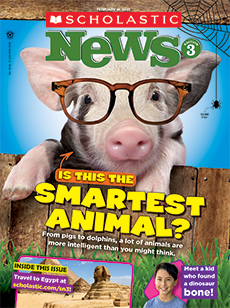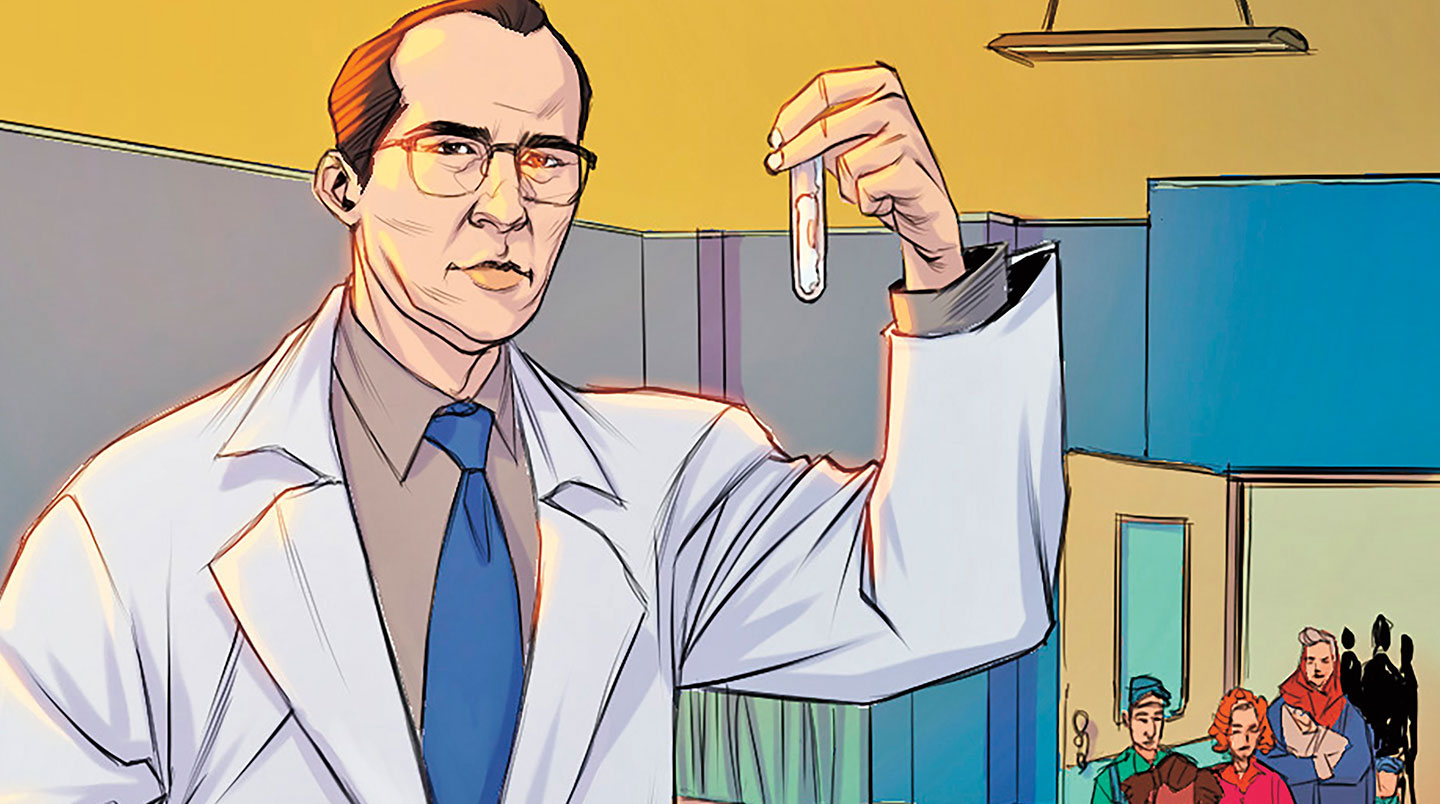Salk had been a doctor for years when polio struck the U.S. He had always wanted to make a difference. Now was his chance.
In 1947, he began to work on a polio vaccine, a shot containing harmless parts of the virus.
“A vaccine takes a part of the virus and shows it to your immune system,” explains Nicole Doria-Rose. She’s a scientist at the National Institutes of Health. “Your immune system is prepared to fight it off if you’re exposed to it.”
By 1954, Salk had created what he thought to be a successful polio vaccine. It was an amazing discovery. But before giving it to the public, Salk had to be sure it was safe. He tested it on his family and himself. Then it was tested on nearly 2 million kids.

